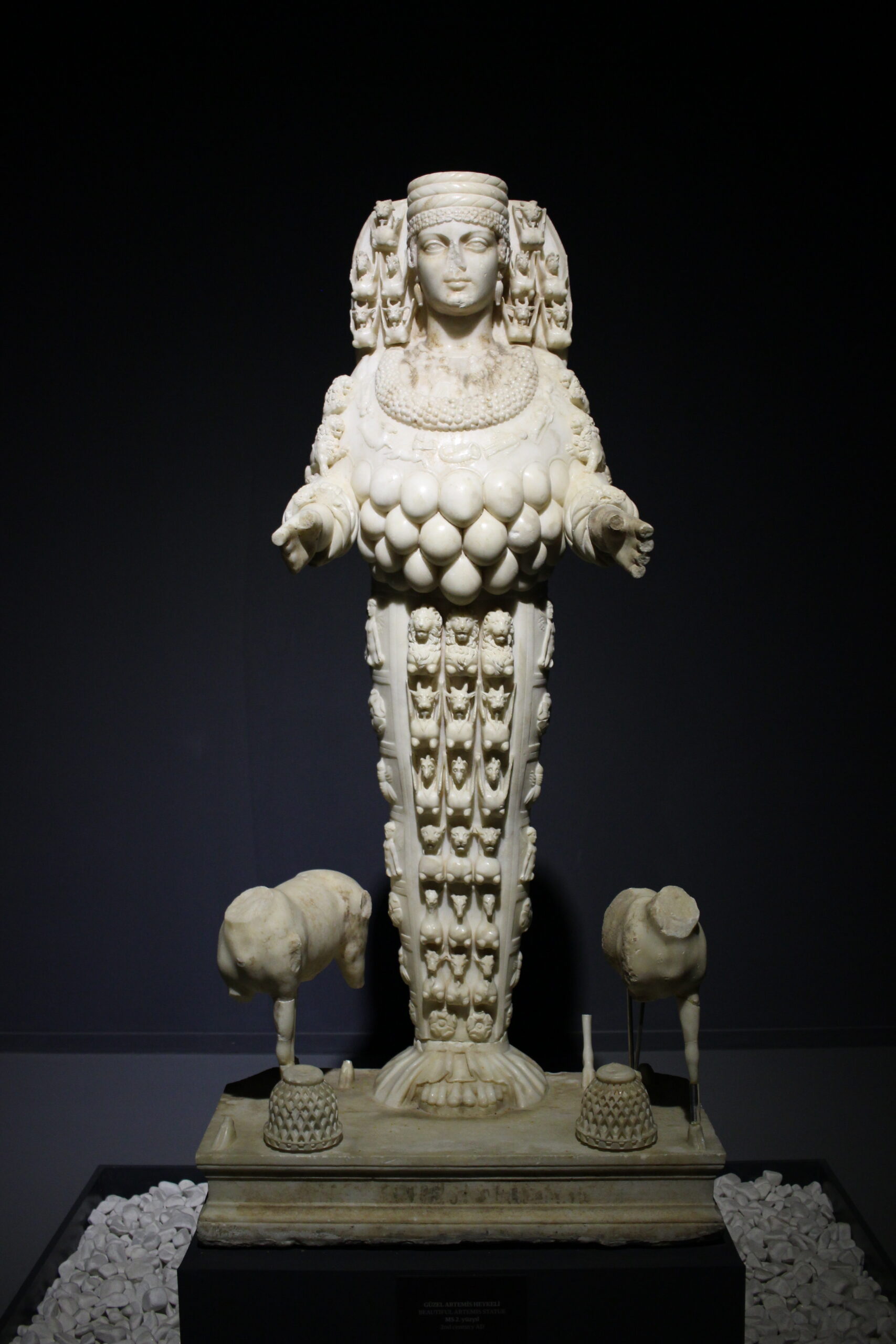The Artemis of Ephesus, 2nd century AD (Ephesus Archaeological Museum). The so-called “Beautiful Artemis” also has the rows of pendants hanging from her chest, but the hinds at her sides, as well as the representations of animals (including lions, bulls, goats, griffins, and sphinxes) on her dress, make clear that Artemis’s identity as mistress of the wild animals, or Potnia Theron, was being emphasized here. If the tassel-shaped objects in front of the hinds are the ends of bands that once hung from the statue’s wrists, they might be a reference to the strands of wool that visitors to Greek sanctuaries such as the Artemision who were seeking asylum wrapped around sticks. More certainly, the signs of the zodiac represented on Artemis’s upper chest are a clear reference to the seasons and the course of the year. The signs might in turn be connected to the timing of the festival.
Author: Roman copy of a Greek original | Date: 2nd century AD

